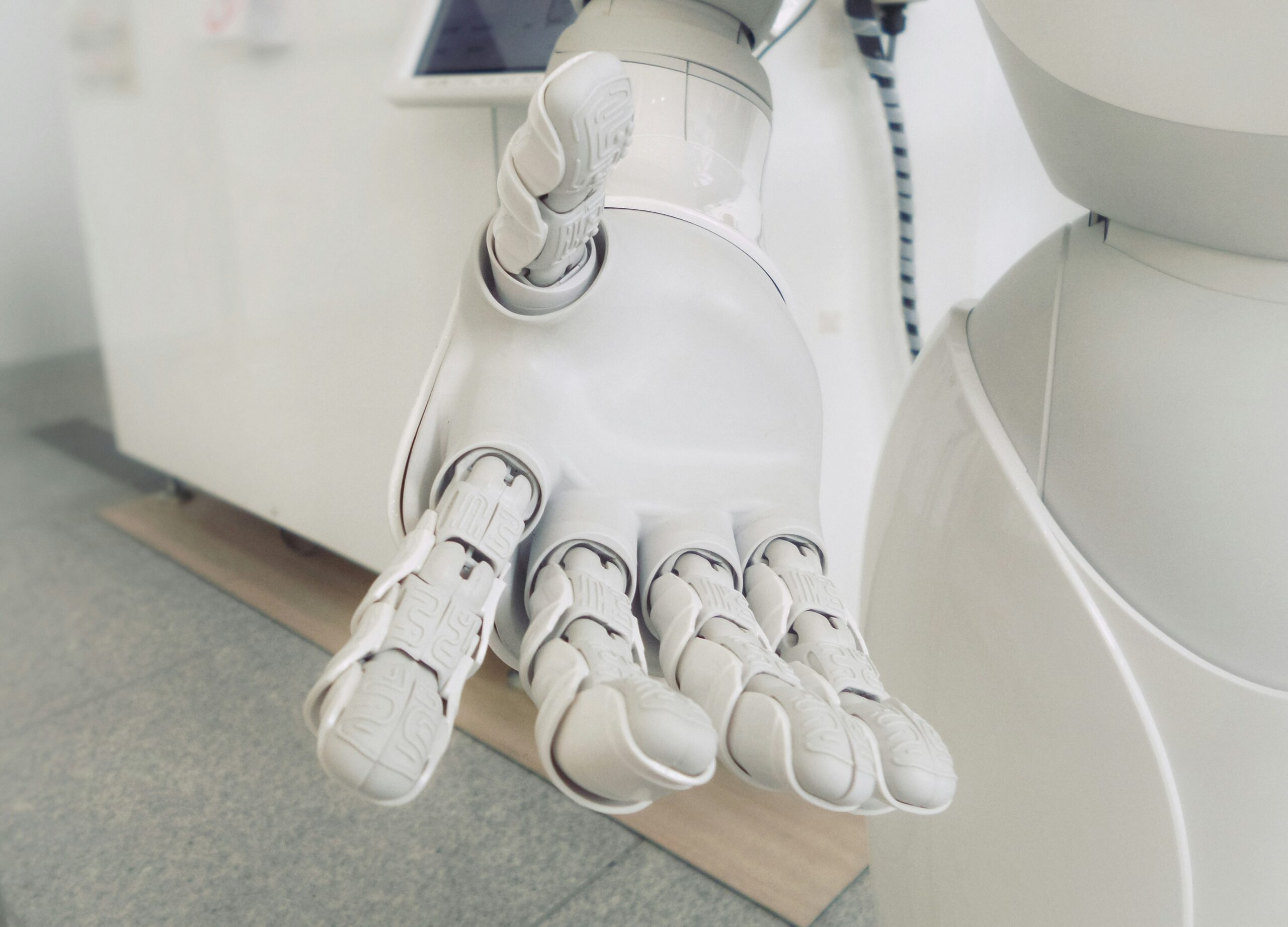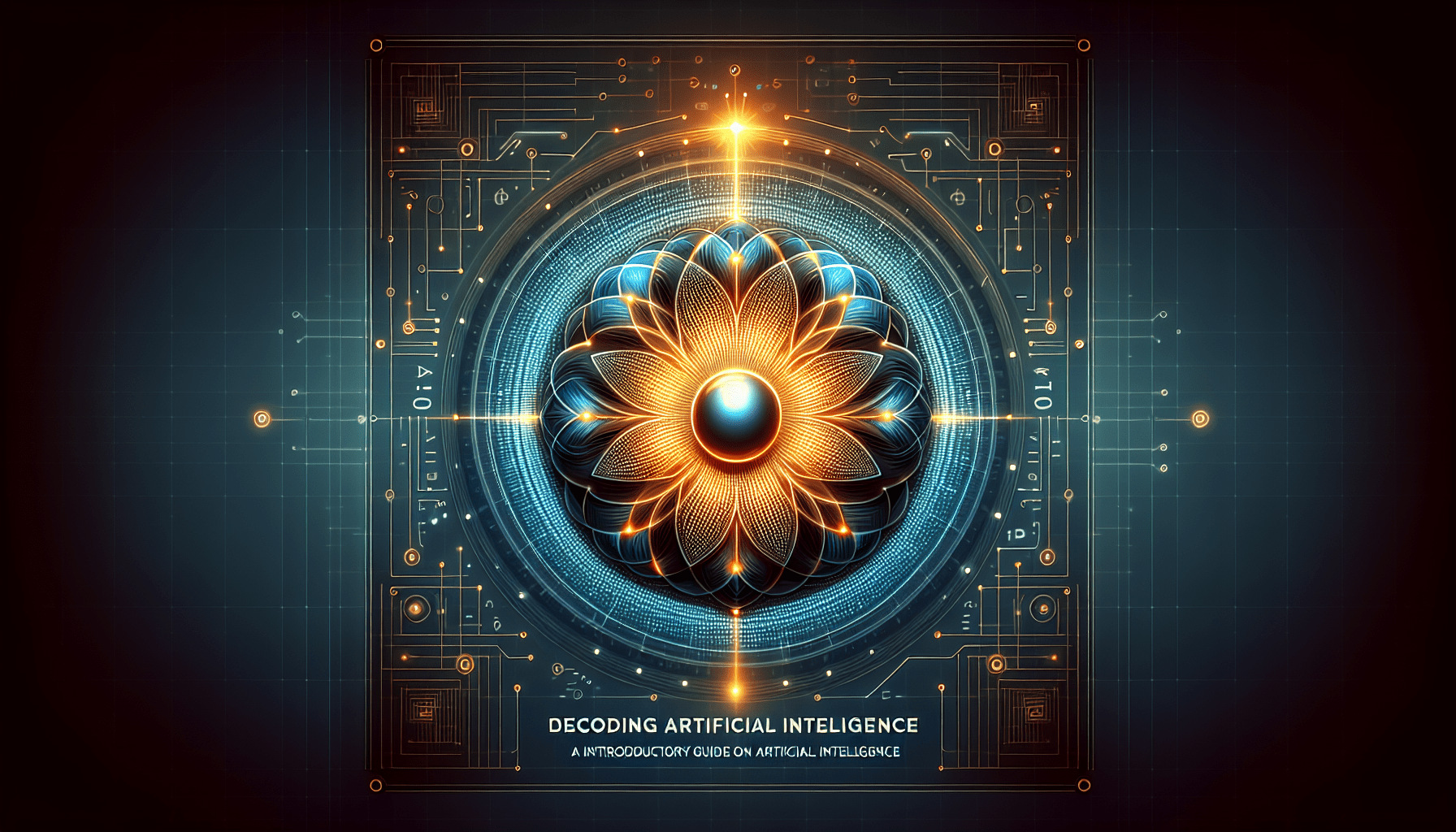You’ve probably heard of Artificial Intelligence, but do you really know what it means? Don’t worry, we’ve got you covered. In this article, we’ll unravel the mysteries of Artificial Intelligence and break it down into simple terms that even a newbie can understand. So get ready to dive into the world of AI and discover how it’s shaping the future of technology.
What is Artificial Intelligence?
Definition of Artificial Intelligence
Artificial Intelligence (AI) refers to the creation of intelligent machines that are capable of performing tasks that typically require human intelligence. It involves simulating human intelligence in computers and enabling them to learn from experience, adapt to new situations, and perform tasks with accuracy and efficiency. AI aims to develop machines that can think, understand, and respond like humans, making them capable of solving complex problems, making decisions, and even exhibiting creativity.
Types of Artificial Intelligence
There are different types of AI, each focusing on specific capabilities and functionalities. The two major types of AI are:
-
Narrow AI: Also known as Weak AI, Narrow AI is designed to perform specific tasks within a limited domain. This type of AI is prevalent in various industries and applications, such as voice assistants, recommendation systems, and image recognition.
-
General AI: General AI, also referred to as Strong AI, aims to mimic human intelligence and possess the ability to understand, learn, and apply knowledge across different domains. However, the development of General AI is still a significant challenge and remains theoretical at this point.
Examples of Artificial Intelligence in Everyday Life
Artificial Intelligence has become an integral part of our daily lives, often without us even realizing it. Here are a few examples of how AI is present in everyday life:
-
Virtual Assistants: Voice-activated virtual assistants like Siri, Alexa, and Google Assistant use AI to recognize and respond to voice commands, allowing users to perform tasks hands-free and receive information instantaneously.
-
Personalized Recommendations: AI algorithms power recommendation systems used by online platforms such as Netflix and Amazon. These systems analyze user data to suggest relevant movies, products, or content based on individual preferences and behavior.
-
Natural Language Processing: AI techniques are employed in language translation apps, chatbots, and virtual customer service representatives, enabling them to understand and respond to human language in a natural and coherent manner.
-
Autonomous Vehicles: With AI embedded in self-driving cars, these vehicles can navigate traffic, detect obstacles, and make real-time decisions to enhance safety and efficiency on the roads.
-
Smart Home Devices: AI-powered devices like smart thermostats, lighting systems, and security cameras use machine learning algorithms to adapt to users’ behaviors, optimizing energy consumption and enhancing home security.
Applications of Artificial Intelligence
Healthcare
Artificial Intelligence has revolutionized the healthcare industry, offering countless benefits in areas such as diagnosis, treatment planning, medical research, and patient care. AI can analyze vast amounts of medical data, contributing to accurate diagnoses, predicting disease progression, and identifying optimal treatment options. Additionally, AI-powered robotic surgery ensures precise and minimally invasive procedures, reducing patient recovery times. AI also aids in the development of personalized medicine, where treatments are tailored to individuals based on their genetic makeup and medical history.
Finance
AI has transformed the finance industry by automating processes, improving risk assessment, and enhancing fraud detection. Intelligent algorithms can analyze vast quantities of financial data in real-time, helping financial institutions make informed investment decisions and optimize portfolios. AI-powered chatbots provide personalized customer assistance, answering queries and resolving issues promptly. Moreover, AI algorithms can detect anomalies and patterns in financial transactions, enabling early fraud detection and prevention.
Retail
Artificial Intelligence has reshaped the retail landscape, providing customers with personalized shopping experiences while helping retailers streamline operations. AI-powered recommendation systems analyze customer preferences, purchase history, and behavior, suggesting products tailored to individual tastes. This enhances customer satisfaction while driving sales and customer loyalty. Additionally, AI-driven inventory management systems optimize stock levels, reducing costs and ensuring products are restocked promptly. Chatbots and virtual assistants enable round-the-clock customer support, improving engagement and resolving customer queries.
Transportation
AI is revolutionizing the transportation industry, particularly with the development of autonomous vehicles. Self-driving cars equipped with AI systems can navigate roads, analyze traffic patterns, and make real-time decisions, contributing to safer and more efficient transportation. Additionally, AI algorithms improve route planning, reducing congestion and optimizing travel times. In logistics, AI is used to optimize supply chain management, improving efficiency, reducing costs, and ensuring timely delivery of goods.
Education
Artificial Intelligence is making its mark in education by personalizing and improving the learning experience for students and educators alike. Intelligent tutoring systems leverage AI algorithms to adapt teaching methods and content based on individual learning styles, enhancing student engagement and performance. AI-powered analytics platforms analyze student data, providing insights on learning patterns, identifying areas where students need assistance, and enabling personalized interventions. Furthermore, AI-powered language learning apps and virtual reality simulations provide immersive educational experiences, making learning more interactive and engaging.
Entertainment
In the entertainment industry, Artificial Intelligence is enhancing user experiences and transforming content creation. AI algorithms analyze user preferences and behavior to recommend movies, TV shows, and music tailored to individual tastes. Additionally, AI is used in video game development to create intelligent virtual characters that can adapt to player behavior, making the gaming experience more immersive. AI-powered content generators can also create art, music, and literature, pushing the boundaries of creativity and enhancing the overall entertainment landscape.

Machine Learning and Artificial Intelligence
Understanding Machine Learning
Machine Learning (ML) is a subset of Artificial Intelligence that focuses on algorithms and statistical models that enable computers to learn and improve from experience without being explicitly programmed. ML algorithms are trained on vast amounts of relevant data, allowing them to identify patterns, make predictions, and perform tasks with minimal human intervention. Machine Learning can be broadly categorized into three types:
-
Supervised Learning: In supervised learning, algorithms are trained on labeled data, where the desired outputs are provided. The algorithm learns from this input-output mapping and can then predict the outputs for new, unseen inputs.
-
Unsupervised Learning: Unsupervised learning involves training algorithms on unlabeled data. The algorithm identifies patterns and relationships within the data without any pre-defined output, making it useful for tasks such as clustering and dimensionality reduction.
-
Reinforcement Learning: Reinforcement learning involves training an agent to interact with an environment and learn through trial and error. The agent receives feedback in the form of rewards or punishments based on its actions, allowing it to learn optimal strategies for achieving specific goals.
The Relationship between Machine Learning and Artificial Intelligence
Machine Learning is a critical component of Artificial Intelligence. AI systems often rely on Machine Learning algorithms to analyze vast amounts of data, identify patterns, and make predictions or decisions. ML enables AI systems to learn from experience, adapt to new situations, and improve performance over time. It forms the foundation for several AI applications, such as image classification, speech recognition, and recommendation systems.
How Machine Learning is Used in AI Applications
Machine Learning is used in a wide range of AI applications, enabling computers to perform various tasks with accuracy and efficiency. Here are a few examples of how Machine Learning is utilized in AI applications:
-
Image Recognition: ML algorithms analyze visual data to classify and identify objects, faces, and patterns within images. This technology is used in applications ranging from self-driving cars to facial recognition systems.
-
Natural Language Processing: ML techniques are employed in NLP applications to understand and process human language. This enables chatbots, virtual assistants, and language translation systems to communicate and respond intelligently.
-
Predictive Analytics: ML algorithms analyze historical data to make predictions and identify patterns that can inform decision-making processes. This is utilized in various domains like finance, healthcare, and marketing for forecasting, risk assessment, and trend analysis.
-
Fraud Detection: ML algorithms can learn from historical fraud patterns to detect and prevent fraudulent activities in real-time. These algorithms continuously adapt to emerging threats, enhancing fraud detection systems in banking and e-commerce platforms.
-
Recommendation Systems: ML algorithms analyze user behavior and preferences to deliver personalized recommendations in various domains, including e-commerce, media streaming, and content platforms.
Deep Learning and Artificial Intelligence
Introduction to Deep Learning
Deep Learning is a subset of Machine Learning that focuses on training artificial neural networks to learn and make decisions by imitating the structure and function of the human brain. Deep Learning models, known as deep neural networks, consist of multiple layers of interconnected nodes called neurons. These networks can process vast amounts of data, extract complex features, and make predictions with remarkable accuracy.
Deep Neural Networks
Deep Neural Networks (DNNs) are the building blocks of Deep Learning. These networks are composed of multiple layers of interconnected neurons, each layer processing and transforming data to extract increasingly complex features. The first layer, known as the input layer, receives raw data, such as images or text. Subsequent layers, called hidden layers, learn progressively sophisticated representations of the data. The final layer, known as the output layer, produces the desired output.
The Role of Deep Learning in AI
Deep Learning plays a pivotal role in advancing AI capabilities by enabling machines to process and understand complex data, such as images, videos, and natural language. Its ability to automatically learn intricate patterns and relationships in data without explicit programming makes it invaluable in various AI applications. Deep Learning has driven significant breakthroughs in areas such as computer vision, speech recognition, and natural language processing, pushing the boundaries of AI capabilities.

Natural Language Processing (NLP) and Artificial Intelligence
What is Natural Language Processing?
Natural Language Processing (NLP) is a subfield of Artificial Intelligence that focuses on enabling computers to understand, interpret, and generate human language. NLP combines techniques from linguistics, computer science, and AI to bridge the gap between human language and machine understanding. NLP encompasses tasks such as language translation, sentiment analysis, text classification, and speech recognition.
Applications of NLP in AI
NLP is utilized in a wide range of AI applications, making it possible for computers to process and generate natural language. Here are a few examples of NLP applications in AI:
-
Chatbots and Virtual Assistants: NLP enables chatbots and virtual assistants to understand user queries and respond in a human-like manner. This allows for natural and seamless conversations and improves user experiences.
-
Language Translation: NLP algorithms are used to translate text from one language to another, enhancing cross-cultural communication and breaking down language barriers.
-
Sentiment Analysis: NLP can analyze text data, such as social media posts and customer reviews, to identify and understand the sentiment expressed. This is crucial for businesses to monitor customer satisfaction and gather feedback.
-
Speech Recognition: NLP techniques are employed in speech recognition systems, allowing computers to convert spoken language into written text. This is utilized in voice assistants, transcription services, and automated voice response systems.
Challenges in Natural Language Processing
While NLP has made significant advancements, several challenges still exist in achieving true human-like understanding of language. These challenges include:
-
Ambiguity: Natural language is often ambiguous, with words or phrases having multiple interpretations. Resolving this ambiguity and understanding the intended meaning is a complex task.
-
Context Understanding: NLP systems struggle with understanding the contextual nuances of language, such as sarcasm, idioms, and cultural references, which heavily rely on background knowledge and world understanding.
-
Language Variations: Different languages, dialects, accents, and slang pose challenges for NLP systems to accurately interpret and generate language in various contexts.
-
Data Limitations: NLP models heavily rely on large amounts of annotated data for training. However, acquiring and annotating vast quantities of diverse and representative data remains a challenge.
Ethics and Artificial Intelligence
AI Bias and Fairness
One of the significant ethical challenges of Artificial Intelligence is the presence of biases in AI systems. AI algorithms learn from data, and if the training data contains biases, the AI system can perpetuate those biases in its decisions and actions. This can lead to unfair treatment or discrimination against certain individuals or groups. It is crucial to address this issue by ensuring diverse and representative training data and continuously monitoring and evaluating AI systems for bias.
Privacy and Security Concerns
As AI systems become more prevalent in our daily lives, concerns about privacy and data security arise. AI often relies on collecting and analyzing vast amounts of personal data, raising concerns about unauthorized access and misuse. It is essential to have robust data privacy regulations and security measures that protect individuals’ sensitive information and ensure responsible use of AI technologies.
Job Displacement and Automation
The rapid advancement of AI and automation has raised concerns about job displacement. AI systems and robots can perform tasks traditionally done by humans, leading to potential job loss in certain industries. While AI can create new job opportunities and increase productivity, it is crucial to ensure effective reskilling and upskilling programs to support workers in adapting to the changing employment landscape.

The Future of Artificial Intelligence
Trends and Developments
The future of Artificial Intelligence holds numerous exciting possibilities. Some key trends and developments include:
-
Exploring General AI: Researchers are continuously striving to develop General AI, which would possess human-level intelligence and cognitive abilities. While achieving General AI is still theoretical, progress is being made in various AI subfields to bring us closer to this goal.
-
Advancements in Robotics: AI-powered robots are becoming more sophisticated and versatile, capable of performing complex tasks with precision. The future holds the potential for robots to play a more significant role in various industries, including healthcare, manufacturing, and agriculture.
-
Explainable AI: As AI systems become more complex, efforts are being made to develop transparent and interpretable AI models. Explainable AI aims to make AI systems more understandable and accountable, ensuring that their decision-making processes can be explained and trusted.
-
Edge Computing and AI: The integration of AI with edge computing technologies allows AI algorithms to be deployed on edge devices, reducing latency and enabling real-time processing. This trend opens up possibilities in areas such as self-driving cars, IoT devices, and smart city infrastructure.
The Impact of AI on Society
Artificial Intelligence has a profound impact on society, shaping various aspects of our lives. AI-driven technologies have made significant advancements in sectors such as healthcare, finance, and transportation, enabling improved efficiency, accessibility, and convenience. However, AI also brings societal challenges, such as job displacement, ethical concerns, and privacy issues. It is crucial to carefully navigate the integration of AI into society, ensuring its benefits are maximized while addressing potential risks and ensuring equitable access.
Beneficial Applications vs. Potential Risks
While Artificial Intelligence offers immense benefits and possibilities, it also comes with potential risks that need to be managed effectively. Some of the key considerations include:
-
Ethical Use: Ensuring AI systems are designed and deployed in an ethical manner, considering fairness, accountability, and transparency.
-
Data Privacy: Protecting individuals’ privacy while collecting, storing, and analyzing large amounts of personal data.
-
Security: Mitigating the risks of unauthorized access, misuse, and potential vulnerabilities in AI systems to protect data and infrastructure.
-
Responsible Regulation: Developing and implementing regulations that ensure responsible and safe usage of AI while fostering innovation and growth.
Getting Started with Artificial Intelligence
AI Learning Resources for Beginners
If you are new to Artificial Intelligence and want to get started, there are several online resources available to help you grasp the fundamentals. Websites like Coursera, Udemy, and edX offer introductory courses on AI, machine learning, and related topics. These courses provide a solid foundation and allow you to learn at your own pace.
Online Courses and Tutorials
In addition to introductory courses, there are more advanced online courses and tutorials available for those looking to deepen their understanding of AI. Platforms like Kaggle and Codecademy offer hands-on coding tutorials and challenges focused on AI and machine learning. These resources provide practical experience and allow you to apply your knowledge to real-world problems.
Community and Networking Opportunities
Engaging with the AI community can be invaluable in your learning journey. Online platforms such as Reddit, Stack Exchange, and GitHub have active communities of AI enthusiasts, researchers, and professionals. Participating in discussions, asking questions, and sharing your work can help you learn from others, gain insights, and build connections in the AI community.

Common Misconceptions about Artificial Intelligence
AI as Human-like Robots
One common misconception about AI is that it involves creating human-like robots with intelligence and emotions. While this is a popular portrayal in science fiction, the reality of AI is far from human-level intelligence. AI is primarily focused on developing intelligent systems that can perform specific tasks, rather than replicating the complexities and capabilities of the human mind.
AI as a Threat to Humanity
Another misconception is that AI poses a significant threat to humanity, capable of surpassing human intelligence and taking control. However, current AI systems are designed with specific purposes and constraints and lack the ability to act autonomously outside their programmed tasks. Ethical guidelines and responsible development practices are in place to ensure that AI is safe, unbiased, and beneficial to society.
AI as Science Fiction
Artificial Intelligence is often misunderstood due to its portrayal in movies and novels, leading to unrealistic expectations. While AI has made significant advancements and is transforming various industries, it is essential to distinguish between the hype portrayed in fiction and the real-world capabilities and limitations of AI technologies.
Conclusion
Artificial Intelligence is a groundbreaking field that continues to reshape various industries and our daily lives. From healthcare and finance to transportation and entertainment, AI has the potential to revolutionize how we work, learn, and interact. Understanding the different types of AI, the role of Machine Learning and Deep Learning, and the applications of Natural Language Processing provides a solid foundation for comprehending the possibilities and challenges associated with AI.
As AI technologies advance, it is crucial to address ethical considerations, such as bias and fairness, privacy and security concerns, and the potential impact on employment. Striking the right balance between the beneficial applications of AI and addressing potential risks will pave the way for a future where AI contributes to a more efficient, productive, and inclusive society.
Getting started with AI can seem daunting, but with the multitude of online learning resources and communities available, anyone can embark on their AI journey. Whether you’re a beginner looking for introductory courses or an experienced professional seeking to enhance your skills, there are resources tailored to suit your needs.
In conclusion, Artificial Intelligence holds immense potential, and its responsible development and application can lead to exciting possibilities in various fields. As AI technologies continue to evolve, embracing the opportunities and challenges it presents will be crucial in harnessing the power of AI for the benefit of humanity.







Leave a Reply